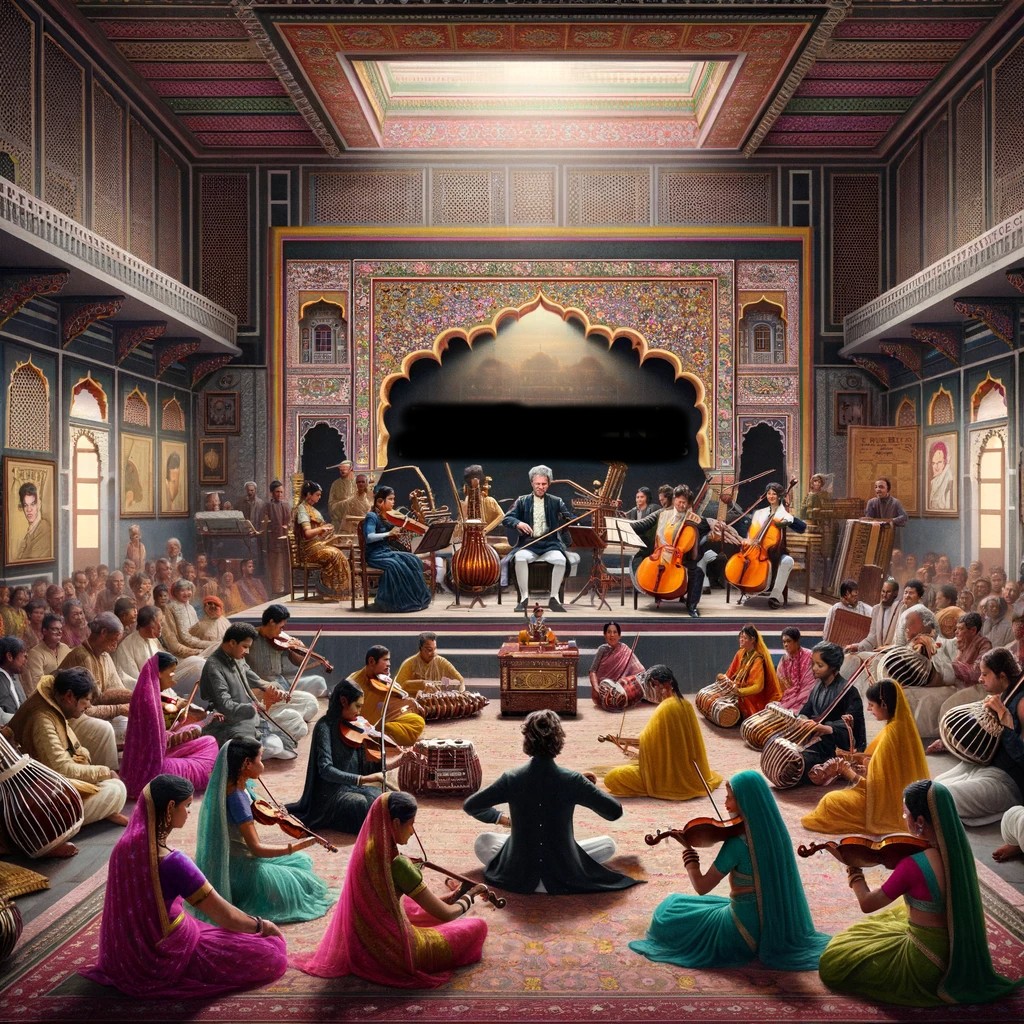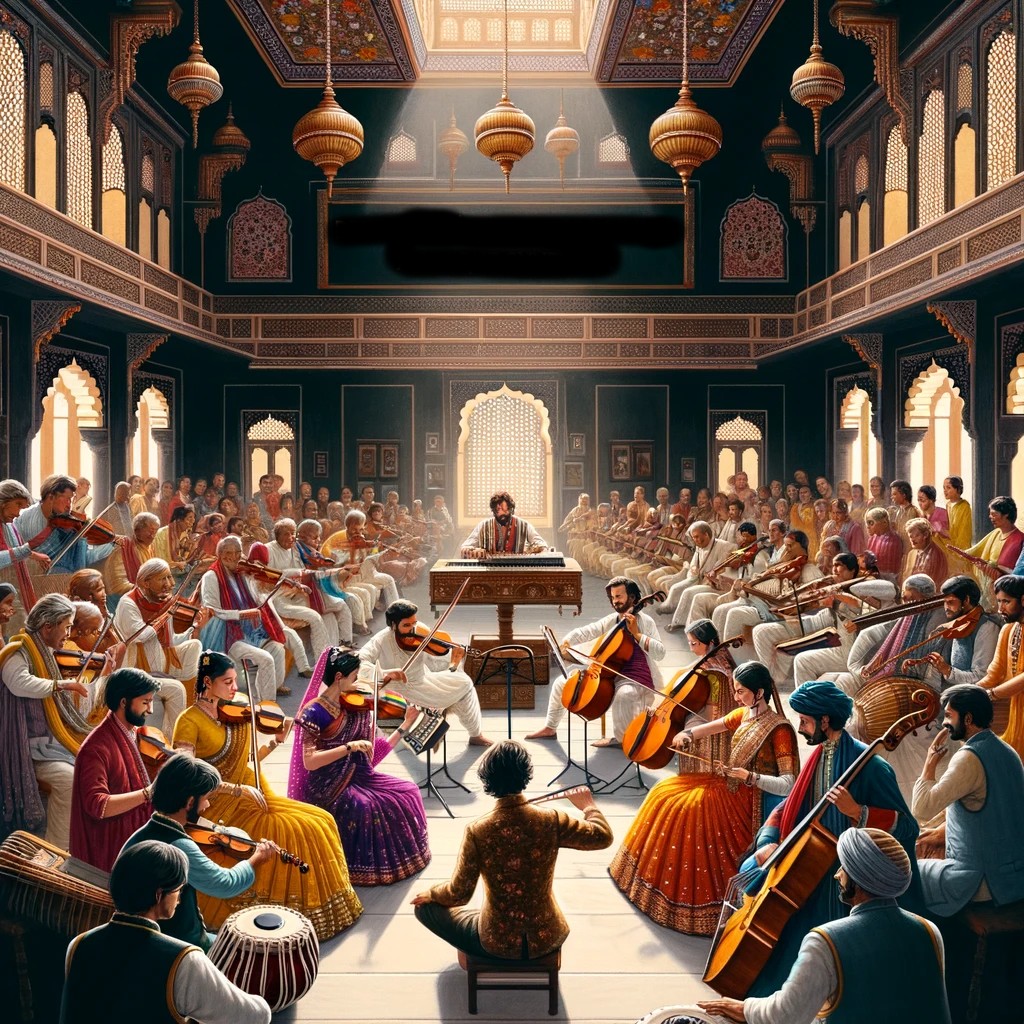
Beethoven’s Influence in India: A Cultural Blend
Ludwig van Beethoven, a titan of Western classical music, has long echoed across continents, influencing myriad cultures with his profound compositions. While his impact is universally acknowledged in the Western world, his influence on Eastern traditions, particularly in India, presents a fascinating study of cultural synthesis. This article delves into how Beethoven’s musical genius has resonated within India, creating a unique blend with traditional Indian music and culture.
The Arrival of Beethoven’s Music in India
The journey of Western classical music into India began during the British Raj in the 18th century. Initially, it was the preserve of the colonial elite and the burgeoning Indian aristocracy who found Western music a symbol of modernity and sophistication. Beethoven’s compositions entered the Indian musical landscape as part of this wave, finding an audience among the elite and the small but growing class of Western-trained Indian musicians.
By the early 20th century, several Indian musicians who had trained in the Western classical tradition began experimenting with integrating these influences into Indian classical forms. Beethoven’s structured symphonies and sonatas offered a new musical vocabulary—rich in harmony and orchestration—that was distinctly different from the melodic and improvisational nature of Indian music.
Cultural Synthesis Through Music
The true essence of Beethoven’s influence lies not in the mere adoption of his compositions, but in how Indian musicians have interpreted his themes within the context of Indian classical music. One of the most notable aspects of this synthesis is the adaptation of Beethoven’s motifs to suit Indian instruments like the sitar, sarod, and tabla. For instance, the iconic motif from Beethoven’s Symphony No. 5 has been adapted by several Indian classical musicians, who have reimagined it with Indian rhythms and scales, showcasing a mesmerizing blend that respects both traditions.
This synthesis goes beyond just adaptation; it reflects a deeper understanding and appreciation of Beethoven’s work. Indian musicians often cite the emotional depth and the structural innovation of Beethoven’s music as key influences in their own compositions. These elements have encouraged Indian composers to experiment with more complex orchestral forms while still adhering to the raga system of Indian classical music.
Beethoven’s Philosophical Influence
Beyond the musical realm, Beethoven’s life philosophy and his approach to overcoming personal adversities have also resonated strongly in India. His struggle with deafness and his determination to continue composing despite his disability have inspired many Indian artists facing social and physical challenges. The ethos of perseverance and the triumph over adversity are themes that deeply connect with the Indian narrative, often reflected in Indian arts and cinema.
Educational Impact and Contemporary Celebrations
The study of Western classical music, including Beethoven’s works, has become a significant part of music education in India. Institutions like the Calcutta School of Music and the Bombay Symphony Orchestra have been pivotal in promoting this genre. These institutions not only teach Western classical music but also encourage the fusion of Western and Indian classical music, nurturing a unique genre that is increasingly recognized on the global stage.
Contemporary celebrations of Beethoven in India often include concerts and recitals that are part of larger global events like the World Music Day. Moreover, Indian film music, which is a significant cultural force, occasionally incorporates Beethoven’s themes, thus reaching a broader audience. This not only enhances the appreciation of Beethoven’s work but also bridges cultural gaps, making classical music accessible to the masses.
Beethoven’s influence in India exemplifies how music can transcend cultural and geographical boundaries to create a new, enriched form of artistic expression. The ongoing dialogue between Beethoven’s compositions and Indian musical traditions highlights the universal appeal and adaptability of his work. As Indian musicians continue to explore and interpret Beethoven’s legacy, they ensure that his music not only survives but thrives in a culturally rich and diverse landscape.
This unique synthesis of Beethoven’s Western classical music with Indian classical forms is a testament to the enduring power of music to connect and inspire across different cultures and epochs. It reminds us that Beethoven’s music, rooted in universal themes of human experience, continues to find new life in the most unexpected places.

Beethoven’s Legacy in Indian Academia and Performance
Beethoven’s enduring legacy in India is not limited to adaptations and philosophical inspirations. Academic institutions across the country have integrated his compositions into their curricula, emphasizing not only performance but also theoretical studies. This academic interest helps in nurturing a well-rounded appreciation of Beethoven’s music among budding musicians and scholars. The rigorous study of his works offers insights into the complexities of Western music theory, composition, and history, which in turn enriches the Indian classical music training by providing a broader musical perspective.
Collaboration and Innovation
The cross-cultural engagement between Beethoven’s works and Indian music has also paved the way for collaborative projects and innovations. Indian composers and musicians frequently collaborate with Western orchestras and ensembles, creating works that are a fusion of Beethoven’s symphonic styles and Indian musical elements. These collaborations are often showcased in international music festivals, bringing global attention to this unique musical synthesis.
An example of such innovation is the “Beethoven Meets India” project, where Indian and Western musicians jointly performed a reinterpreted version of Beethoven’s Ninth Symphony. This version incorporated Indian classical vocal improvisations, blending them with the original choral arrangements, demonstrating a seamless fusion that respects both traditions.
Impact on Modern Indian Composers
Modern Indian composers, influenced by Beethoven’s mastery in form and harmony, have experimented with blending symphonic pieces with traditional Indian music structures. This has led to the creation of entirely new genres that appeal to a global audience. Composers like A.R. Rahman and Ilaiyaraaja, for instance, have cited the influence of Western classical music in their compositions, which often include orchestral arrangements combined with traditional Indian instruments and melodies.
These composers have contributed significantly to film scores and symphonic music, often incorporating elements from Beethoven’s compositions to add depth and complexity to their works. Their successful fusion of these musical forms has not only popularized classical music in India but has also set a precedent for future generations of musicians.
Challenges and Future Prospects
While the fusion of Beethoven’s music with Indian classical elements has been successful, it also faces challenges such as the preservation of purity in both forms. Critics argue that excessive fusion can lead to a dilution of traditional musical forms. However, proponents of this synthesis view it as a dynamic evolution that can revitalize both musical traditions.
Looking ahead, the future of this unique synthesis appears promising. With increasing globalization and cultural exchange, more opportunities arise for innovative interactions between Western and Indian classical music. Educational programs continue to evolve, focusing on a balanced understanding of both traditions, thus preparing young musicians to explore further the possibilities of musical fusion.
As digital media and technology continue to shrink the world, Beethoven’s music is likely to play an even more significant role in global musical dialogues. The availability of online platforms and digital libraries makes it easier than ever for Indian musicians and audiences to access and study Beethoven’s vast repertoire, ensuring that his influence will resonate in the Indian musical landscape for generations to come.
Conclusion
Beethoven’s resonance in India is a brilliant example of how music, much like a universal language, can bridge diverse cultures and foster mutual understanding and appreciation. Through continuous adaptation and innovation, Beethoven’s work remains vibrantly alive and relevant, demonstrating the power of music to transcend time and space. As Indian musicians continue to engage with and reinterpret Beethoven’s legacy, they not only celebrate his genius but also contribute to a global cultural heritage, enriching both the Western and Indian musical traditions.
In essence, the story of Beethoven in India is one of cultural respect, artistic innovation, and mutual enrichment—a testament to the composer’s universal appeal and the unifying power of music.
References
- Calcutta School of Music. (n.d.). About Us. Retrieved from Calcutta School of Music website
- Bombay Symphony Orchestra. (n.d.). Our History. Retrieved from Bombay Symphony Orchestra website
- World Music Day Celebrations. (2022). Events and Performances.
- “Beethoven Meets India” Project. (2021). Collaboration Details.
- Interviews with A.R. Rahman and Ilaiyaraaja regarding Western Classical Influences. (2020).
- Digital Music Platforms. (n.d.). Access and Educational Resources.